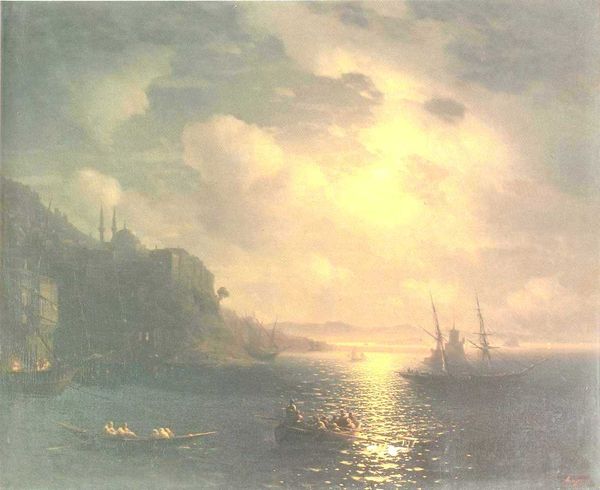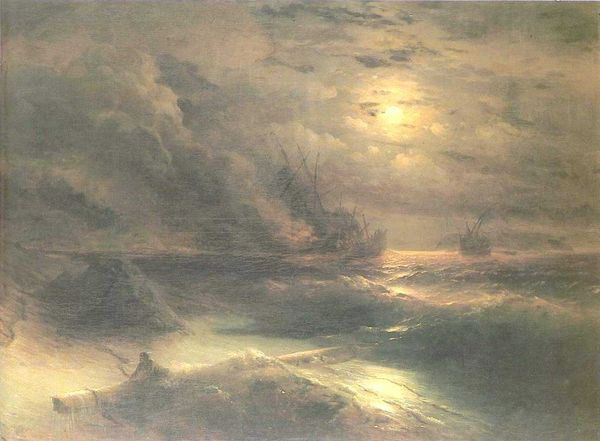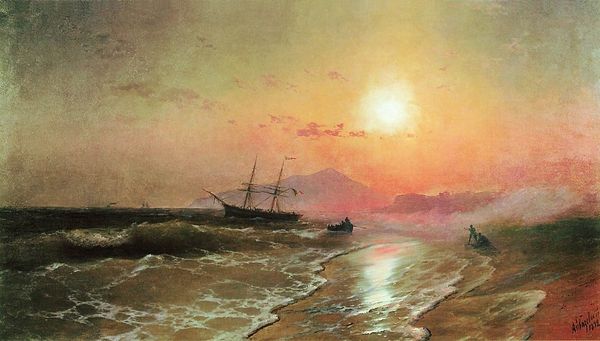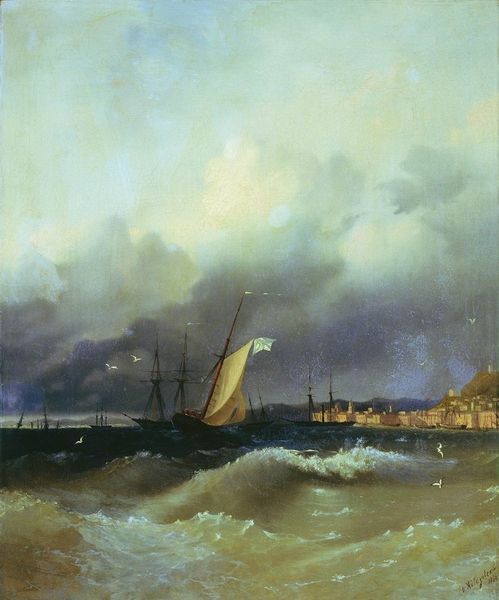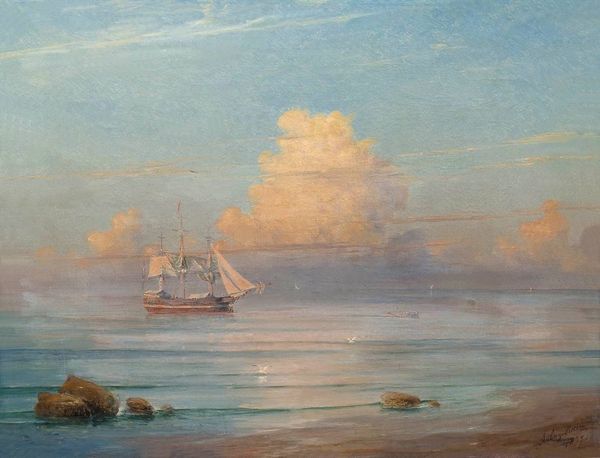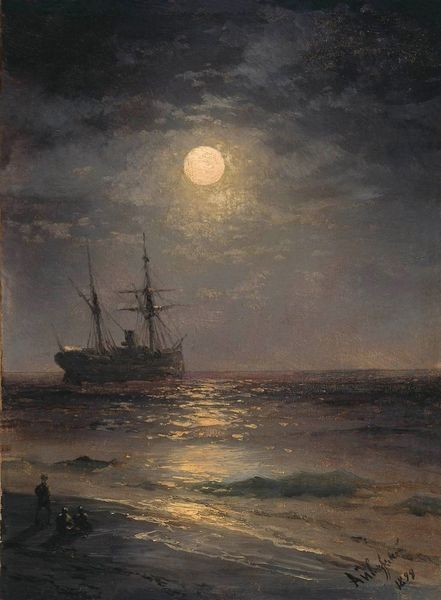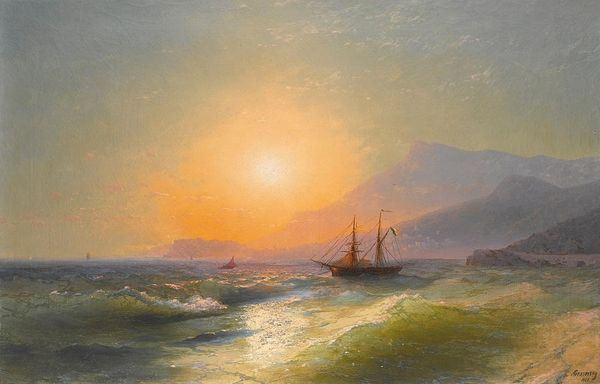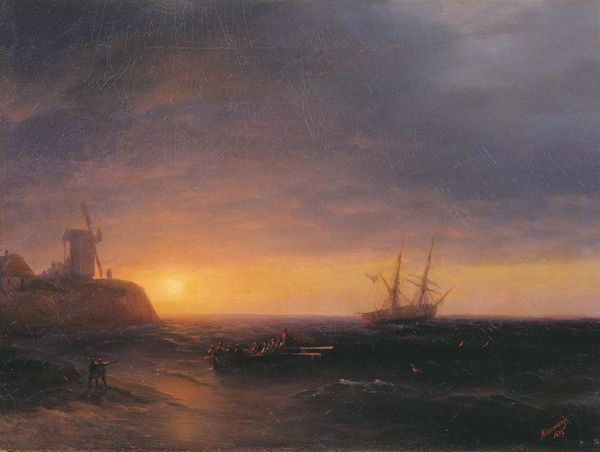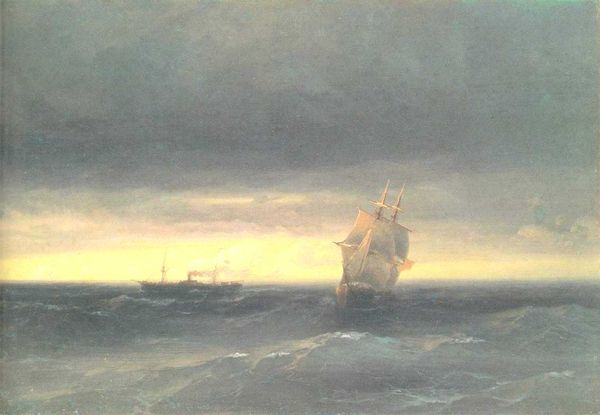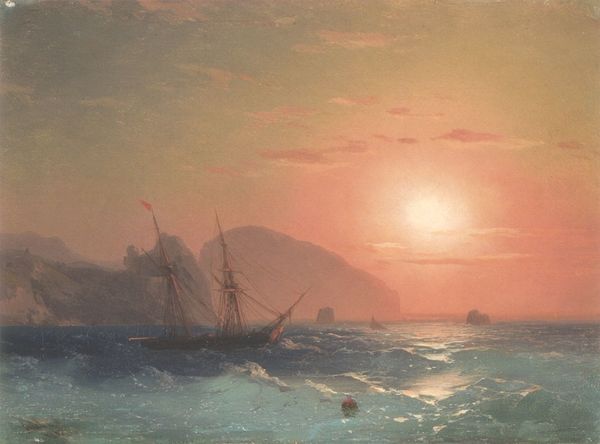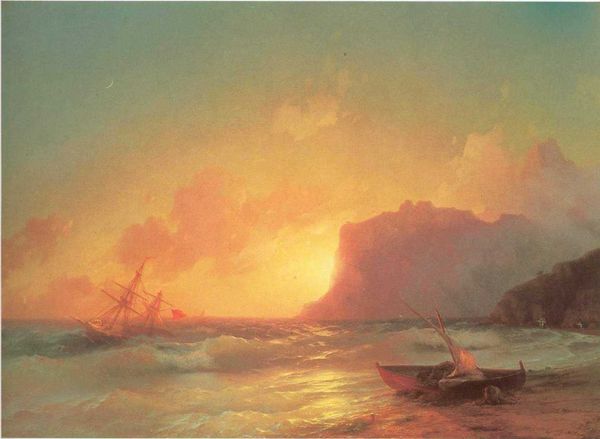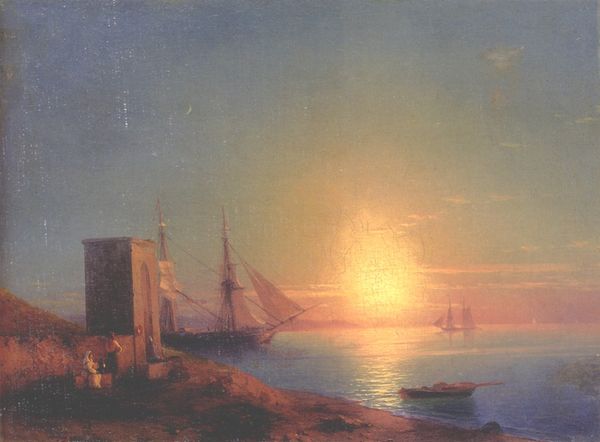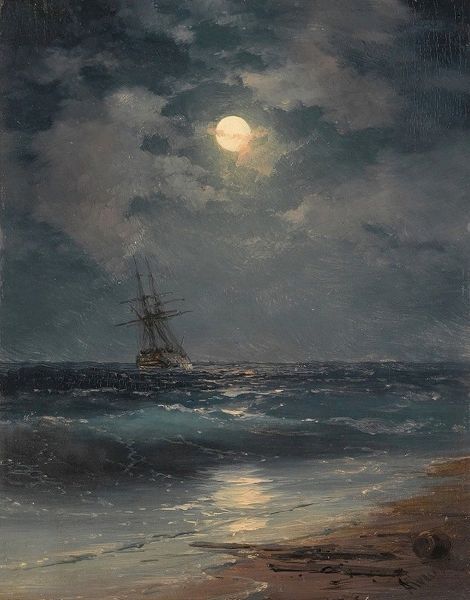
Dimensions: 45 x 73 cm
Copyright: Public domain
Editor: Here we have Aivazovsky's "The Bay of Naples by Moonlight," painted in 1892, rendered in oil. It feels incredibly serene, almost dreamlike with its hazy purples and blues, yet there's a subtle tension in the depiction of the sea. What do you see in this piece? Curator: Beyond the romantic aesthetic, it's crucial to consider Aivazovsky's identity as a Crimean Armenian. While celebrated in Russia, his work often carries undertones of longing and displacement, which gains weight in light of the political events taking place in the late 19th century and beyond. The moon, a recurring symbol, might represent hope or even divine presence during times of upheaval. Do you think that reading changes how we experience the work? Editor: That's fascinating, I hadn't considered that perspective at all. It's so easy to get caught up in the visual beauty, but knowing about his background really shifts the emotional weight. It adds a layer of vulnerability I hadn't noticed before. Curator: Exactly. Consider the socio-political context of empires and nation-building at that time and the artist's position in that world, also how race, nationhood and artistic license intersect here. Understanding this, this "moonlight" on the bay is far from simple aesthetics: rather, a deep visual inquiry into belonging and displacement, one where beauty itself serves as a tool of contemplation and quiet resistance. What do you take away from this after considering Aivazovsky’s personal history? Editor: I see the painting with fresh eyes now, as less of a picturesque scene and more of a profound statement about the search for home and identity. It reminds us that art can be both beautiful and deeply political, subtly reflecting the artist's experience. Curator: Precisely. And remembering these intersecting narratives transforms how we interpret and interact with art—inviting more empathetic readings of artistic production.
Comments
No comments
Be the first to comment and join the conversation on the ultimate creative platform.
